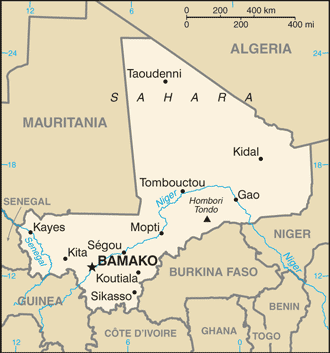By NewsDesk @infectiousdiseasenews
Government officials in the governorate of Mopti are reporting seven human Crimean-Congo hemorrhagic fever (CCHF) deaths, according to Swiss Info report (computer translated).

In the village of Samoa, 14 cases were detected and 7 people died.
Crimean-Congo hemorrhagic fever is a widespread disease caused by a tick-borne virus (Nairovirus) of the Bunyaviridae family. The CCHF virus causes severe viral hemorrhagic fever outbreaks, with a case fatality rate of 10–40%.
Animals become infected by the bite of infected ticks and the virus remains in their bloodstream for about one week after infection, allowing the tick-animal-tick cycle to continue when another tick bites. Although a number of tick genera are capable of becoming infected with CCHF virus, ticks of the genus Hyalomma are the principal vector.
The CCHF virus is transmitted to people either by tick bites or through contact with infected animal blood or tissues during and immediately after slaughter. The majority of cases have occurred in people involved in the livestock industry, such as agricultural workers, slaughterhouse workers and veterinarians. Human-to-human transmission is possible.


One thought on “Crimean-Congo hemorrhagic fever: 7 deaths in Mali village”